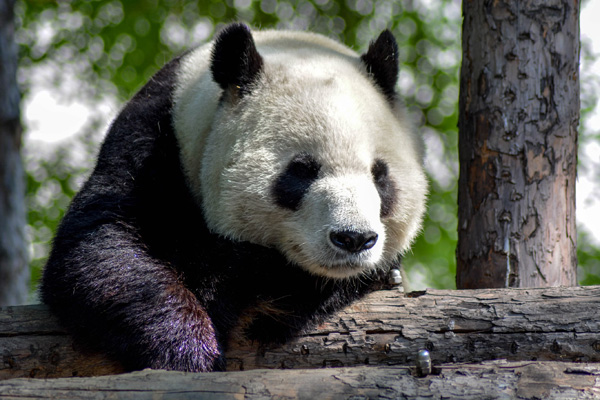Chinese scientists achieve breakthrough in panda stem cell cultivation

[Panda. Photo Credit: Unsplash]
Chinese scientists have successfully cultured panda stem cells according to a report from the South China Morning Post.
Researchers from the Chengdu Panda Breeding Research Base and Guangzhou Institute of Biomedicine and Health believe this technology could revolutionize efforts to preserve the endangered species.
With only about 2,000 wild pandas remaining, these iconic animals face considerable threats from habitat loss due to logging and road construction.
Over 90% of some panda populations are at risk of extinction, demonstrating the urgent need for innovative conservation strategies.
The research team has successfully isolated and preserved specific panda cell types, including those from bone marrow and umbilical cords.
However, challenges such as limited cell proliferation and weak differentiation capacities remain.
The study, published in Science Advances, focuses on induced pluripotent stem cells (iPSCs), which can regenerate into various cell types.
Scientists create these by reprogramming somatic cells from skin and hair.
Dr. Zhang Xiaohao, co-first author of the study, highlighted that iPSCs can be extracted without harming pandas, offering a non-invasive method for genetic preservation.
iPSCs have the potential to differentiate into diverse cell types, including mesenchymal stem cells.
These stem cells can develop into various cells like bone, cartilage, muscle, and fat tissues.
This technology could serve as an infinite source of material for regenerating different cell types as needed, possibly preventing extinction by differentiating into primitive germ cells and other types.
The implications of this research extend beyond panda conservation.
Scientists believe this technology could also help preserve genetic resources of other endangered species, such as the Sumatran rhinoceros and Tasmanian devil.
Moreover, the team has made progress toward using panda iPSCs to create gametes and embryos in vitro.
In parallel developments, the veterinary field is increasingly adopting stem cell therapies.
In South Korea, animal hospitals are setting up stem cell centers, and clinical veterinarians are discussing the necessity and safety of these treatments in seminars.
Stem cells are known for their anti-inflammatory, immunomodulating, and tissue-regenerating properties.
They are beneficial in treating elderly animals and those with incurable diseases.
Recent studies published in international academic journals indicate that mesenchymal stem cells used in veterinary practices are less tumorigenic than embryonic and induced pluripotent stem cells.
As interest in regenerative medicine grows in the veterinary field, clinics offering stem cell treatments are gaining attention.
The cultured meat industry is also set to benefit from advancements in stem cell research.
Using live animal stem cells to grow meat, this sector is expected to increase as countries like South Korea promote the industry through relaxed regulations.
Currently, only Singapore and the United States have approved the sale of cell-cultured meat products.
As global meat demand rises and environmental and wellness trends spread, the need for developing cultured meat continues to grow.
However, food safety concerns have limited its market approval in most countries.
While the primary focus of the Chinese research team remains on panda conservation, they acknowledge the broader implications of their work.
"Our breakthrough in panda stem cell research opens doors not only for wildlife conservation but also for advancements in regenerative medicine and potentially even sustainable food production," Dr. Zhang stated.
He added, "However, we must proceed cautiously and ethically, ensuring that our primary goal of protecting endangered species is not overshadowed."
The research team plans to continue their work, focusing next on improving cell differentiation techniques and exploring potential applications in other endangered species.

- Shinah Youn / Grade 11
- Colburn School

![THE HERALD STUDENT REPORTERS [US]](/assets/images/logo_student_us.png)
![THE HERALD STUDENT REPORTERS [Canada]](/assets/images/logo_student_ca.png)
